#AI-powered cloud infrastructure
Explore tagged Tumblr posts
Text
Global Data Center Spending Surges to $250B by 2026
Capital is flowing into sustainable cooling, intelligent energy systems, and high-density GPU racks. Discover how infrastructure priorities are shifting.
Read more here – https://dcpulse.com/article/powering-the-cloud-top-data-center-cities-2025-trends
#Data center trends 2025#top data center cities#cloud infrastructure#hyperscale data centers#edge computing#artificial intelligence infrastructure#global data center market#cloud growth 2025#data center investment#sovereign cloud strategy#Ashburn data center alley#Singapore digital hub#green data centers#energy-efficient cloud#fastest growing cloud markets#global latency optimization#data center site selection#data center cooling technology#AI-powered cloud infrastructure#data sovereignty laws#India data center boom#Brazil cloud infrastructure#Malaysia hyperscale growth#Vietnam data center market#Southeast Asia cloud expansion#Latin America data center growth#liquid cooling for data centers#renewable energy in data centers#regulatory compliance cloud#data localization laws
1 note
·
View note
Text
Cisco Research Highlights Major Infrastructure Shift with AI Integration
Cisco’s AI-Powered Network Revolution: Transforming Infrastructure for the Future
In a rapidly evolving technological landscape, Cisco is spearheading a major transformation in network infrastructure through AI integration. Unlike conventional AI applications that focus on consumer products or software automation, Cisco’s approach revolves around building an “AI-native infrastructure” designed to meet the complex demands of enterprise networks and next-gen AI workloads. This shift is not just a technological upgrade but a strategic move to redefine how businesses operate, secure their data, and deliver seamless digital experiences worldwide. This article explores Cisco’s vision, innovations, and the broad impact of this infrastructure revolution.
Table of Contents
Redefining Network Architecture with AI-Native Foundations
AI-Driven Security: Protecting the Future of Enterprise Networks
Enhancing Network Visibility and Automation Through AI Operations
Cisco’s AI Infrastructure Investment
Empowering Businesses and Communities Worldwide
The Path Forward for AI-Enabled Infrastructure
Quotes:
FAQs:
Redefining Network Architecture with AI-Native Foundations
Cisco’s groundbreaking research highlights the urgency of rebuilding network infrastructure to support the exponential growth of AI, IoT, and cloud applications. Rather than merely adding AI tools on top of existing systems, Cisco is pioneering networks architected from the ground up to handle the intense compute, bandwidth, and latency requirements of AI workloads. This includes the development of custom Ethernet fabrics optimized for AI/ML clusters using NVIDIA and AMD GPUs, enabling faster data throughput and real-time analytics.
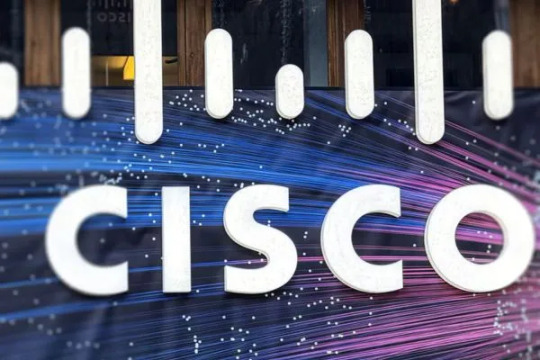
The initiative began as early as 2023 when Cisco started investing heavily in research and partnerships aimed at designing hardware and software ecosystems that would not only support but accelerate AI adoption. By 2025, Cisco publicly launched a suite of AI-native network products, showcasing how networks can dynamically adapt to data flows, improve reliability, and automate routine tasks.
This architecture matters because traditional networks struggle under the weight of modern AI and cloud demands, often causing bottlenecks and security vulnerabilities. Cisco’s AI-native infrastructure aims to eliminate these challenges by offering scalability, resilience, and intelligent automation, which in turn drives business efficiency and innovation.
AI-Driven Security: Protecting the Future of Enterprise Networks
Security is a core pillar of Cisco’s AI strategy. As cyber threats grow increasingly sophisticated, Cisco leverages AI and machine learning to detect anomalies, prevent breaches, and analyze encrypted traffic without compromising privacy. Their AI-powered security platforms use behavioral analysis to identify threats that traditional systems might miss and enable automatic remediation, reducing response times drastically.
Cisco introduced this integrated security approach alongside their AI-native infrastructure, positioning it as an essential tool for enterprises transitioning to hybrid and multi-cloud environments. This strategy aligns with Cisco’s Zero Trust architecture, which assumes breaches will happen and continuously validates every device and user.
This AI-empowered security not only protects sensitive data but also ensures business continuity, making it a critical enabler for companies worldwide to embrace digital transformation with confidence. It is particularly beneficial for industries like finance, healthcare, and government sectors where data protection is paramount.
Read More : Cisco Research Highlights Major Infrastructure Shift with AI Integration
#Cisco#AI integration#network infrastructure#artificial intelligence#enterprise networks#AI-powered security#digital transformation#cloud computing#IoT#AI operations#network automation#cybersecurity#tech innovation#IT infrastructure#machine learning#predictive analytics#global connectivity#infrastructure modernization#AI in business#future of networking
0 notes
Text
Google Cloud Powers Infrastructure with Ironwood TPU and AI Hypercomputer
AI infrastructure evolution accelerates with Google Cloud’s AI Hypercomputer, an advanced system for optimizing the efficiency and scalability of AI workloads. With the introduction of the 7th generation Ironwood TPU and enhancements in networking, storage, and software, it redefines supercomputing for AI. Key Points: Ironwood TPU: Improved performance for inference with improved energy efficiency. Hardware Expansion: New NVIDIA VMs and Networking Advancements. Optimized Storage: Exapool Hyperdisk and Cloud Storage Anywhere Cache Solutions. Software Innovations: Cloud Pathways... read more: https://www.turtlesai.com/en/pages-2657/google-cloud-powers-infrastructure-with-ironwood-tpu-and-ai
#https://www.turtlesai.com/en/pages-2657/google-cloud-powers-infrastructure-with-ironwood-tpu-and-ai
0 notes
Text
Internet of Things (IoT) Platform Market Industry Statistics: Growth, Share, Value, and Trends
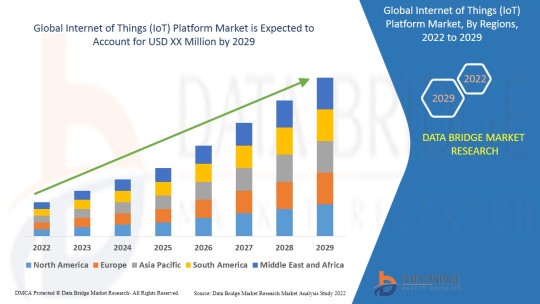
"Internet of Things (IoT) Platform Market Size And Forecast by 2029
According to Data Bridge Market Research analyses that the internet of things (IoT) platform market will exhibit a CAGR of 28.9% for the forecast period of 2022-2029.
The extensive reach of IoT Connectivity Solutions Market underscores its influence on a global scale. With an expanding customer base, Internet of Things (IoT) Platform Market strengthens its market position. Through strategic partnerships, Internet of Things (IoT) Platform Market enhances its visibility and credibility. The diverse product offerings from Smart Device Integration Platform Market cater to various sectors, increasing its impact. Internet of Things (IoT) Platform Market continues to push boundaries, broadening its market scope effectively.
Customer satisfaction remains the driving force behind Internet of Things (IoT) Platform Market continued success. By focusing on quality and service excellence, Cloud-Based IoT Platform Market fosters long-term relationships with consumers. The dedication of Industrial IoT (IIoT) Market to customer needs results in innovative solutions tailored to specific demands. AI-Powered IoT Platform Market constantly improves its offerings to enhance user experience. Through responsive service and continuous upgrades, Internet of Things (IoT) Platform Market maintains high customer loyalty.
Our comprehensive Internet of Things (IoT) Platform Market report is ready with the latest trends, growth opportunities, and strategic analysis. https://www.databridgemarketresearch.com/reports/global-iot-platform-market
**Segments**
- **Platform Type**: The IoT platform market can be segmented based on platform type into device management, application enablement, and connectivity management platforms. Device management platforms help in managing and monitoring connected devices, ensuring their efficient operation. Application enablement platforms provide tools for developing and managing IoT applications. Connectivity management platforms focus on managing the communication between devices and the IoT platform.
- **Deployment Type**: The market can also be segmented based on deployment type into cloud-based and on-premises. Cloud-based IoT platforms offer scalability, flexibility, and cost-effectiveness, making them popular among organizations looking to quickly deploy IoT solutions. On-premises platforms, on the other hand, provide more control and security over data but may require higher upfront costs and maintenance.
- **End-User**: In terms of end-users, the IoT platform market caters to industries such as manufacturing, healthcare, retail, transportation, and others. Each industry has specific requirements for IoT platforms, such as real-time monitoring in manufacturing, patient health tracking in healthcare, inventory management in retail, and asset tracking in transportation.
- **Region**: Geographically, the global IoT platform market can be segmented into North America, Europe, Asia Pacific, Latin America, and Middle East & Africa. North America and Europe are early adopters of IoT technologies due to advanced infrastructure and high IT spending. Asia Pacific is experiencing rapid growth in the IoT platform market, driven by expanding industrialization and smart city initiatives.
**Market Players**
- **Amazon Web Services, Inc.**: A key player in the IoT platform market, AWS offers IoT services such as AWS IoT Core and IoT Greengrass, enabling secure device connectivity and management. Their platform is known for its scalability and integration with other AWS services.
- **Microsoft Corporation**: Microsoft's Azure IoT platform provides comprehensive IoT solutions, including IoT Hub for device management and Azure IoT Edge for edge computing. Their platform focuses on interoperability and integration with existing Microsoft products.
- **IBM Corporation**: IBM offers Watson IoT Platform, which combines data analytics and cognitive computing capabilities for IoT applications. Their platform is designed to handle large volumes of IoT data and provide insights for predictive maintenance and asset optimization.
- **Cisco Systems, Inc.**: Cisco's IoT platform, Cisco IoT Control Center, helps in managing connected devices and ensuring network security. Their platform emphasizes connectivity and scalability for large IoT deployments.
- **SAP SE**: SAP's IoT platform, SAP Leonardo, integrates IoT data with business processes to drive digital transformation. Their platform focuses on industry-specific solutions and analytics for improving operational efficiency.
For more detailed insights and market analysis, you can refer to: https://www.databridgemarketresearch.com/reports/global-iot-platform-market The IoT platform market continues to witness significant growth and evolution driven by advancements in technology and increasing adoption across various industries. One emerging trend in the market is the shift towards more specialized IoT platforms tailored to meet specific industry requirements. As organizations seek to leverage IoT to drive efficiency and innovation, there is a growing demand for platforms that offer industry-specific solutions such as predictive maintenance in manufacturing, remote patient monitoring in healthcare, and supply chain optimization in retail. This trend is driving market players to develop targeted offerings that address the unique needs of different sectors, fostering greater adoption and expansion of the IoT ecosystem.
Moreover, the convergence of IoT with other emerging technologies such as artificial intelligence (AI), machine learning, and blockchain is reshaping the capabilities of IoT platforms. Integrating AI and machine learning algorithms into IoT platforms enables advanced data analytics and predictive insights, empowering organizations to make data-driven decisions and automate processes. Blockchain technology enhances the security and trustworthiness of IoT data by enabling secure, tamper-proof transactions and ensuring data integrity across interconnected devices. The combination of these technologies is unlocking new possibilities for IoT applications and driving innovation in diverse industries.
Another key factor shaping the IoT platform market is the emphasis on data privacy and security. With the proliferation of connected devices and the exponential growth of data generated by IoT sensors, ensuring the confidentiality and integrity of data has become a top priority for organizations. IoT platform providers are investing in robust security mechanisms such as encryption, authentication, and access control to safeguard sensitive information and prevent cybersecurity threats. Compliance with data protection regulations such as GDPR and CCPA is driving the implementation of stringent security measures in IoT platforms, reinforcing trust and transparency in data handling practices.
Furthermore, the increasing awareness of sustainability and environmental impact is influencing the development of green IoT platforms that prioritize energy efficiency and resource optimization. Green IoT solutions aim to minimize carbon footprint, reduce energy consumption, and promote eco-friendly practices in IoT deployments. By integrating renewable energy sources, optimizing network infrastructure, and implementing smart energy management systems, green IoT platforms contribute to environmental conservation and sustainable development goals. This trend aligns with the global push towards sustainability and green initiatives, driving the adoption of environmentally conscious IoT solutions across industries.
In conclusion, the IoT platform market is experiencing dynamic shifts and transformative trends that are reshaping the landscape of connected technologies. The convergence of industry-specific solutions, advanced technologies, data security measures, and sustainability considerations is driving innovation and unlocking new opportunities for businesses to harness the power of IoT. As organizations navigate the complexities of IoT deployments and seek to extract maximum value from connected ecosystems, partnering with robust and flexible IoT platform providers will be crucial to driving digital transformation and staying competitive in the evolving market landscape.The IoT platform market is witnessing a paradigm shift with the emergence of specialized platforms tailored to meet specific industry needs. This trend reflects the growing demand for IoT solutions that address unique challenges and requirements across diverse sectors such as manufacturing, healthcare, retail, and transportation. Industry-specific platforms offer targeted features and functionalities that enable organizations to streamline operations, increase efficiency, and drive innovation in their respective domains. By focusing on delivering tailored solutions, IoT platform providers can cater to the intricate needs of different industries, fostering greater adoption and customization of IoT technology.
Moreover, the integration of IoT with advanced technologies like artificial intelligence, machine learning, and blockchain is revolutionizing the capabilities of IoT platforms. By incorporating AI and machine learning algorithms, IoT platforms can leverage sophisticated data analytics and predictive insights to empower businesses with actionable intelligence and automation capabilities. Blockchain technology, on the other hand, enhances the security and immutability of IoT data, ensuring the integrity and trustworthiness of transactions and communications within connected devices. This convergence of technologies is reshaping the landscape of IoT applications, enabling organizations to unlock new opportunities for growth and efficiency across various industry verticals.
Data privacy and security have become paramount concerns in the IoT landscape, given the increasing volume of data generated by connected devices and sensors. IoT platform providers are doubling down on robust security measures such as encryption, authentication, and access control to safeguard sensitive information and mitigate cybersecurity risks. Compliance with stringent data protection regulations like GDPR and CCPA is driving the adoption of enhanced security protocols in IoT platforms, reinforcing the trust and transparency of data handling practices. By prioritizing data security and privacy, organizations can instill confidence in their IoT deployments and foster a secure digital environment for their operations.
Sustainability and environmental impact are emerging as significant drivers in shaping the development of IoT platforms, with a focus on green solutions that promote energy efficiency and resource optimization. Green IoT platforms aim to minimize carbon footprint, reduce energy consumption, and advance eco-friendly practices in IoT deployments. By integrating renewable energy sources, optimizing network infrastructure, and implementing smart energy management systems, green IoT solutions contribute to environmental conservation and support sustainability goals. The adoption of environmentally conscious IoT platforms aligns with the global push towards sustainable development, encouraging businesses to embrace green initiatives in their IoT strategies for a more sustainable future.
In conclusion, the IoT platform market is undergoing transformative shifts driven by industry-specific solutions, advanced technologies, stringent security measures, and sustainable practices. The convergence of these trends is reshaping the IoT landscape, offering businesses unprecedented opportunities to leverage connected technologies for digital transformation and competitive advantage. As organizations navigate the complexities of IoT deployments and strive to maximize the value of IoT ecosystems, partnering with innovative and agile IoT platform providers will be essential in unlocking the full potential of IoT technology and driving sustainable growth in the evolving market landscape.
The market is highly fragmented, with a mix of global and regional players competing for market share. To Learn More About the Global Trends Impacting the Future of Top 10 Companies in Internet of Things (IoT) Platform Market : https://www.databridgemarketresearch.com/reports/global-iot-platform-market/companies
Key Questions Answered by the Global Internet of Things (IoT) Platform Market Report:
What is the current state of the Internet of Things (IoT) Platform Market, and how has it evolved?
What are the key drivers behind the growth of the Internet of Things (IoT) Platform Market?
What challenges and barriers do businesses in the Internet of Things (IoT) Platform Market face?
How are technological innovations impacting the Internet of Things (IoT) Platform Market?
What emerging trends and opportunities should businesses be aware of in the Internet of Things (IoT) Platform Market?
Browse More Reports:
https://www.databridgemarketresearch.com/reports/global-drilling-waste-management-markethttps://www.databridgemarketresearch.com/reports/global-hydrogen-storage-markethttps://www.databridgemarketresearch.com/reports/global-polypropylene-packaging-film-markethttps://www.databridgemarketresearch.com/reports/europe-topical-use-acne-treatment-markethttps://www.databridgemarketresearch.com/reports/north-america-amniotic-products-market
Data Bridge Market Research:
☎ Contact Us:
Data Bridge Market Research
US: +1 614 591 3140
UK: +44 845 154 9652
APAC: +653 1251 1010
✉ Email: [email protected]"
#IoT Connectivity Solutions Market#Smart Device Integration Platform Market#Cloud-Based IoT Platform Market#Industrial IoT (IIoT) Market#AI-Powered IoT Platform Market#Edge Computing IoT Market#IoT Data Management Market#Connected Device Ecosystem Market#IoT Network Infrastructure Market#Smart Home IoT Market
0 notes
Text
Prompt Engine Commercial by Karthik Ramani Review
Prompt Engine Commercial by Karthik Ramani – Discover Why Prompt Engine Pro is the Ultimate Tool for Entrepreneurs and Creatives Prompt Engine Commercial by Karthik Ramani. When it comes to tools that simplify workflows, Prompt Engine Pro emerges as a top choice due to its seamless functionality and innovative features. Unlike conventional extensions or collections of prompts, this app works as…

View On WordPress
#affordable prompt engine commercial solution#AI powered prompt engine commercial services#best prompt engine commercial software#cloud based prompt engine commercial applications#custom prompt engine commercial development#enterprise level prompt engine commercial system#high quality prompt engine commercial tool#most effective prompt engine commercial platform#prompt engine commercial for specific industries#scalable prompt engine commercial infrastructure
0 notes
Text
What Should You Know About Edge Computing?
As technology continues to evolve, so do the ways in which data is processed, stored, and managed. One of the most transformative innovations in this space is edge computing. But what should you know about edge computing? This technology shifts data processing closer to the source, reducing latency and improving efficiency, particularly in environments where immediate action or analysis is…
#5G#AI#AI edge#AI integration#automation#autonomous vehicles#bandwidth#cloud#cloud infrastructure#cloud security#computing#computing power#data generation#data management#data processing#data storage#data transfer#decentralization#digital services#digital transformation#distributed computing#edge analytics#edge computing#edge devices#edge inferencing#edge networks#edge servers#enterprise data#Healthcare#hybrid cloud
0 notes
Text
What does AI actually look like?
There has been a lot of talk about the negative externalities of AI, how much power it uses, how much water it uses, but I feel like people often discuss these things like they are abstract concepts, or people discuss AI like it is this intangible thing that exists off in "The cloud" somewhere, but I feel like a lot of people don't know what the infrastructure of AI actually is, and how it uses all that power and water, so I would like to recommend this video from Linus Tech Tips, where he looks at a supercomputer that is used for research in Canada. To be clear I do not have anything against supercomputers in general and they allow important work to be done, but before the AI bubble, you didn't need one, unless you needed it. The recent AI bubble is trying to get this stuff into the hands of way more people than needed them before, which is causing a lot more datacenter build up, which is causing their companies to abandon climate goals. So what does AI actually look like?
First of all, it uses a lot of hardware. It is basically normal computer hardware, there is just a lot of it networked together.

Hundreds of hard drives all spinning constantly
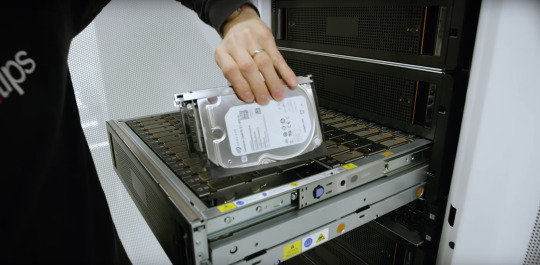
Each one of the blocks in this image is essentially a powerful PC, that you would still be happy to have as your daily driver today even though the video is seven years old. There are 576 of them, and other more powerful compute nodes for bigger datasets.


The GPU section, each one of these drawers contains like four datacenter level graphics cards. People are fitting a lot more of them into servers now than they were then.

Now for the cooling and the water. Each cabinet has a thick door, with a water cooled radiator in it. In summer, they even spray water onto the radiator directly so it can be cooled inside and out.

They are all fed from the pump room, which is the floor above. A bunch of pumps and pipes moving the water around, and it even has cooling towers outside that the water is pumped out into on hot days.

So is this cool? Yes. Is it useful? Also yes. Anyone doing biology, chemistry, physics, simulations, even stuff like social sciences, and even legitimate uses of analytical ai is glad stuff like this exists. It is very useful for analysing huge datasets, but how many people actually do that? Do you? The same kind of stuff is also used for big websites with youtube. But the question is, is it worth building hundreds more datacenters just like this one, so people can automatically generate their emails, have an automatic source of personal attention from a computer, and generate incoherent images for social media clicks? Didn't tech companies have climate targets, once?
110 notes
·
View notes
Text
AI’s energy use already represents as much as 20 percent of global data-center power demand, research published Thursday in the journal Joule shows. That demand from AI, the research states, could double by the end of this year, comprising nearly half of all total data-center electricity consumption worldwide, excluding the electricity used for bitcoin mining.
The new research is published in a commentary by Alex de Vries-Gao, the founder of Digiconomist, a research company that evaluates the environmental impact of technology. De Vries-Gao started Digiconomist in the late 2010s to explore the impact of bitcoin mining, another extremely energy-intensive activity, would have on the environment. Looking at AI, he says, has grown more urgent over the past few years because of the widespread adoption of ChatGPT and other large language models that use massive amounts of energy. According to his research, worldwide AI energy demand is now set to surpass demand from bitcoin mining by the end of this year.
“The money that bitcoin miners had to get to where they are today is peanuts compared to the money that Google and Microsoft and all these big tech companies are pouring in [to AI],” he says. “This is just escalating a lot faster, and it’s a much bigger threat.”
The development of AI is already having an impact on Big Tech’s climate goals. Tech giants have acknowledged in recent sustainability reports that AI is largely responsible for driving up their energy use. Google’s greenhouse gas emissions, for instance, have increased 48 percent since 2019, complicating the company’s goals of reaching net zero by 2030.
“As we further integrate AI into our products, reducing emissions may be challenging due to increasing energy demands from the greater intensity of AI compute,” Google’s 2024 sustainability report reads.
Last month, the International Energy Agency released a report finding that data centers made up 1.5 percent of global energy use in 2024—around 415 terrawatt-hours, a little less than the yearly energy demand of Saudi Arabia. This number is only set to get bigger: Data centers’ electricity consumption has grown four times faster than overall consumption in recent years, while the amount of investment in data centers has nearly doubled since 2022, driven largely by massive expansions to account for new AI capacity. Overall, the IEA predicted that data center electricity consumption will grow to more than 900 TWh by the end of the decade.
But there’s still a lot of unknowns about the share that AI, specifically, takes up in that current configuration of electricity use by data centers. Data centers power a variety of services—like hosting cloud services and providing online infrastructure—that aren’t necessarily linked to the energy-intensive activities of AI. Tech companies, meanwhile, largely keep the energy expenditure of their software and hardware private.
Some attempts to quantify AI’s energy consumption have started from the user side: calculating the amount of electricity that goes into a single ChatGPT search, for instance. De Vries-Gao decided to look, instead, at the supply chain, starting from the production side to get a more global picture.
The high computing demands of AI, De Vries-Gao says, creates a natural “bottleneck” in the current global supply chain around AI hardware, particularly around the Taiwan Semiconductor Manufacturing Company (TSMC), the undisputed leader in producing key hardware that can handle these needs. Companies like Nvidia outsource the production of their chips to TSMC, which also produces chips for other companies like Google and AMD. (Both TSMC and Nvidia declined to comment for this article.)
De Vries-Gao used analyst estimates, earnings call transcripts, and device details to put together an approximate estimate of TSMC’s production capacity. He then looked at publicly available electricity consumption profiles of AI hardware and estimates on utilization rates of that hardware—which can vary based on what it’s being used for—to arrive at a rough figure of just how much of global data-center demand is taken up by AI. De Vries-Gao calculates that without increased production, AI will consume up to 82 terrawatt-hours of electricity this year—roughly around the same as the annual electricity consumption of a country like Switzerland. If production capacity for AI hardware doubles this year, as analysts have projected it will, demand could increase at a similar rate, representing almost half of all data center demand by the end of the year.
Despite the amount of publicly available information used in the paper, a lot of what De Vries-Gao is doing is peering into a black box: We simply don’t know certain factors that affect AI’s energy consumption, like the utilization rates of every piece of AI hardware in the world or what machine learning activities they’re being used for, let alone how the industry might develop in the future.
Sasha Luccioni, an AI and energy researcher and the climate lead at open-source machine-learning platform Hugging Face, cautioned about leaning too hard on some of the conclusions of the new paper, given the amount of unknowns at play. Luccioni, who was not involved in this research, says that when it comes to truly calculating AI’s energy use, disclosure from tech giants is crucial.
“It’s because we don’t have the information that [researchers] have to do this,” she says. “That’s why the error bar is so huge.”
And tech companies do keep this information. In 2022, Google published a paper on machine learning and electricity use, noting that machine learning was “10%–15% of Google’s total energy use” from 2019 to 2021, and predicted that with best practices, “by 2030 total carbon emissions from training will reduce.” However, since that paper—which was released before Google Gemini’s debut in 2023—Google has not provided any more detailed information about how much electricity ML uses. (Google declined to comment for this story.)
“You really have to deep-dive into the semiconductor supply chain to be able to make any sensible statement about the energy demand of AI,” De Vries-Gao says. “If these big tech companies were just publishing the same information that Google was publishing three years ago, we would have a pretty good indicator” of AI’s energy use.
19 notes
·
View notes
Text


I have never seen anything like this- it's a mansion in the middle of a residential area. Built in 2000, in Dallas, TX, it has 0bds. 1ba, & is listed for $2.4M.

Surprise! The beautiful entrance foyer. Does anyone want to buy a Bitcoin Mining Center?


This looks like a break room.
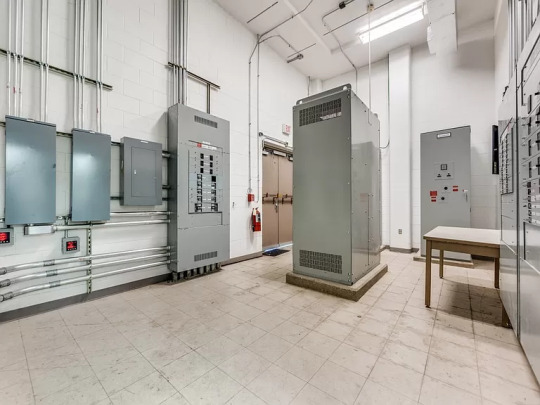
According to the description: Formerly AT&T, this upgraded turnkey Tier 2 Data Center is a Full Liquid Cooling Immersion System. True multi-use facility whether you need AI services, cloud hosting, traditional data center, servers or even Bitcoin Mining - this site has it all! This property comes with all equipment included!
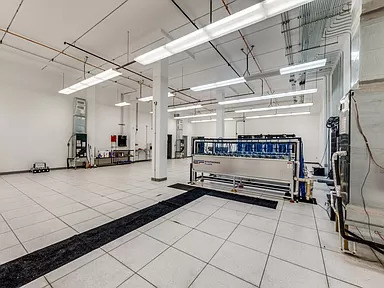
I don't even know what I'm looking at.
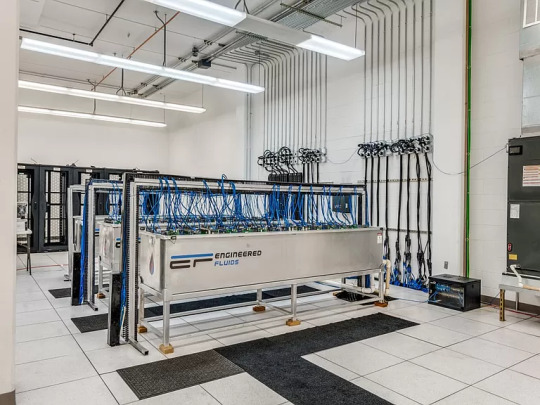
Steel Reinforced CMU, 3 Phase Power, 2 Power Grids, Backup Diesel Generator, Sites on Main Branch Lines of Communication Infrastructure for Dallas, Fire Suppression, Electronic Access, Bulletproof Glass, Double Safe Room Door, Raised Floor. There's a safe room?
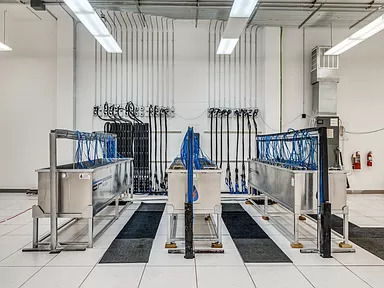
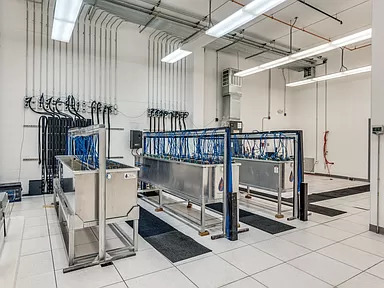
Upgrades include: 500kw 3 Phase Panels with digital monitors, Full Liquid Immersion System, 500kw Dry Cooler, 3 Phase Pump, 3 Slic Tanks, 5 New HVAC Units.
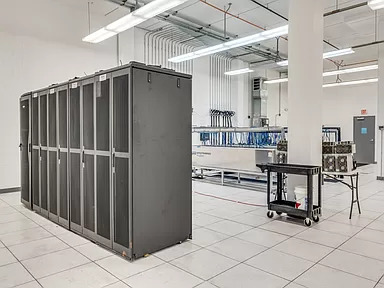
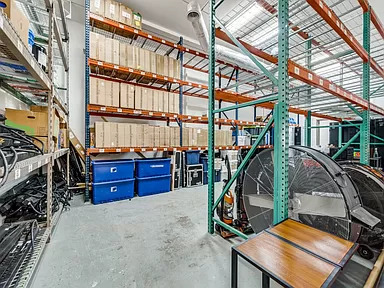
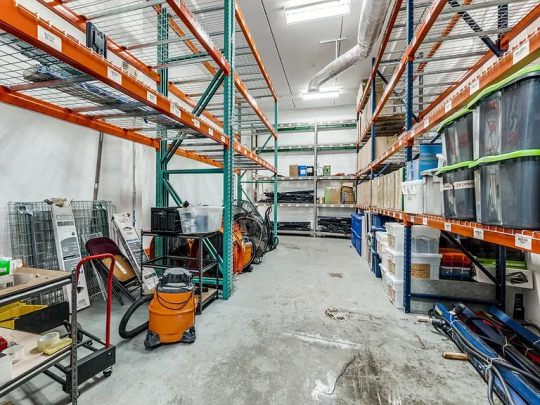
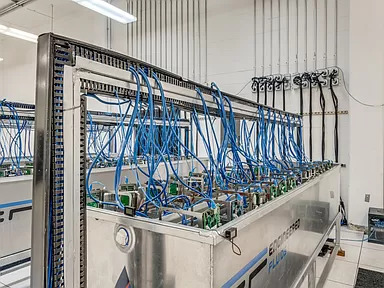
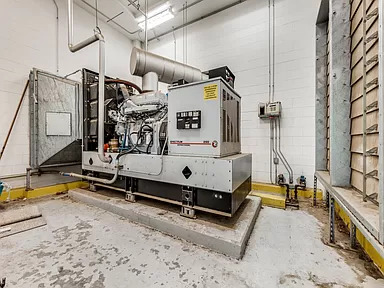
So, they can just sell all this? They said it's turn key. So, is it bitcoin or what? I wonder why they're selling it. That's suspicious- maybe it's not making money, anymore.


Out back. That's all they have, a wood stockade fence around the property?
https://www.zillow.com/homedetails/13229-Southview-Ln-Dallas-TX-75240/118222349_zpid/
#hidden in plain site house#weird homes for sale#bitcoin mining house for sale#house tours#business for sale
100 notes
·
View notes
Text
The cryptocurrency hype of the past few years already started to introduce people to these problems. Despite producing little to no tangible benefits — unless you count letting rich people make money off speculation and scams — Bitcoin consumed more energy and computer parts than medium-sized countries and crypto miners were so voracious in their energy needs that they turned shuttered coal plants back on to process crypto transactions. Even after the crypto crash, Bitcoin still used more energy in 2023 than the previous year, but some miners found a new opportunity: powering the generative AI boom. The AI tools being pushed by OpenAI, Google, and their peers are far more energy intensive than the products they aim to displace. In the days after ChatGPT’s release in late 2022, Sam Altman called its computing costs “eye-watering” and several months later Alphabet chairman John Hennessy told Reuters that getting a response from Google’s chatbot would “likely cost 10 times more” than using its traditional search tools. Instead of reassessing their plans, major tech companies are doubling down and planning a massive expansion of the computing infrastructure available to them.
[...]
As the cloud took over, more computation fell into the hands of a few dominant tech companies and they made the move to what are called “hyperscale” data centers. Those facilities are usually over 10,000 square feet and hold more than 5,000 servers, but those being built today are often many times larger than that. For example, Amazon says its data centers can have up to 50,000 servers each, while Microsoft has a campus of 20 data centers in Quincy, Washington with almost half a million servers between them. By the end of 2020, Amazon, Microsoft, and Google controlled half of the 597 hyperscale data centres in the world, but what’s even more concerning is how rapidly that number is increasing. By mid-2023, the number of hyperscale data centres stood at 926 and Synergy Research estimates another 427 will be built in the coming years to keep up with the expansion of resource-intensive AI tools and other demands for increased computation. All those data centers come with an increasingly significant resource footprint. A recent report from the International Energy Agency (IEA) estimates that the global energy demand of data centers, AI, and crypto could more than double by 2026, increasing from 460 TWh in 2022 to up to 1,050 TWh — similar to the energy consumption of Japan. Meanwhile, in the United States, data center energy use could triple from 130 TWh in 2022 — about 2.5% of the country’s total — to 390 TWh by the end of the decade, accounting for a 7.5% share of total energy, according to Boston Consulting Group. That’s nothing compared to Ireland, where the IEA estimates data centers, AI, and crypto could consume a third of all power in 2026, up from 17% in 2022. Water use is going up too: Google reported it used 5.2 billion gallons of water in its data centers in 2022, a jump of 20% from the previous year, while Microsoft used 1.7 billion gallons in its data centers, an increase of 34% on 2021. University of California, Riverside researcher Shaolei Ren told Fortune, “It’s fair to say the majority of the growth is due to AI.” But these are not just large abstract numbers; they have real material consequences that a lot of communities are getting fed up with just as the companies seek to massively expand their data center footprints.
9 February 2024
#ai#artificial intelligence#energy#big data#silicon valley#climate change#destroy your local AI data centre
75 notes
·
View notes
Text
Remember a couple years ago when everyone was talking about how Bitcoin alone was using as much energy as a medium-sized country to enable rampant speculation and financial scams? The demand was so high in some jurisdictions that it was keeping fossil-fuel power plants from being taken offline, and even reactivating some defunct polluting generation infrastructure. Crypto’s environment toll was rightfully seen as unconscionable to many people following the industry. But the generative AI boom is taking it to a whole new level.
Since the launch of ChatGPT in December 2022, the entire tech industry has reoriented itself to try to get a boost from the interest in generative AI and many sectors beyond have pretended they’re doing something with artificial intelligence (AI) too in the hopes of increasing their share price. But if there are any winners from the AI hype, it’s the companies running the data centers — especially Microsoft, Google, and Amazon — and those making the chips that power it all. Nvidia is the standout example in that category, given its ascent to become one of the most valuable publicly traded companies in the world and the questions that’s prompted about the AI bubble.
All those generative AI tools are incredibly computationally intensive, which means they require a lot of dedicated hardware within massive hyperscale data centers owned by the cloud oligopoly, and all that computing power requires a immense amount of water and electricity to keep it running. If you’ve followed tech investment news over the past year, you’ve been seeing the effect of that as Microsoft, Google, and Amazon have dropped billions of dollars every few weeks on new communities around the world for new data center projects.
24 notes
·
View notes
Text
youtube
Israel’s use of AI in Gaza should terrify us all | Op-ed by Antony Loewenstein
Antony Loewenstein, independent journalist, best-selling author, and co-founder of Declassified Australia, explains how Israel’s wars are not fought alone, but with the backing of powerful foreign players who fund, arm and shield it from accountability. While western governments provide billions in weapons and diplomatic cover, Loewenstein argues that what’s far less understood is the extent of corporate interests behind the Israeli war machine. Tech giants like Google, Microsoft and Amazon have embedded themselves within Israel’s military-industrial complex, supplying AI-driven tools and cloud infrastructure that fuel mass surveillance and warfare against Palestinians. This partnership, driven by profit and ideological alignment, has turned Gaza into a testing ground for cutting-edge military technology. But as Loewenstein warns, it won’t stop with Palestinians. He argues that Israel has provided a blueprint for how to control and subjugate entire communities with AI-driven efficiency and little accountability. As governments around the world look to replicate these methods, the implications for vulnerable populations become even more alarming. Loewenstein concludes that the unchecked spread of Israel’s digital warfare model is not just a threat to Palestinians, but to the entire world.
7 notes
·
View notes
Text
Huawei is pulling no punches in its race to manufacture a new generation of processors. Huawei has collaborated with SMIC – China’s largest semiconductor foundry – to apply Deep Ultraviolet Lithography (DUV) on what was previously only possible on EUV (Extreme Ultra-Violet technology). Once again, Huawei and SMIC defied the proverbial American “experts” with creative engineering solutions.
Huawei arrived at fabricating 5nm chips with DUV even as the process is more expensive than with EUV. If Huawei had access to EUV they would be already manufacturing 2-3nm chips. That will come, in short time, as both China and Russia, under permanent US high-tech blockade, must by all means develop their own EUV technology.
Shanghai geeks are convinced that Huawei will switch on 6G networksbefore the end of the decade. Their current breathless drive is not just aimed at the smartphone front – where Huawei is peerless; the new Huawei Mate 70 Pro + is by far the absolute top smartphone in the world, running on Harmony OS. Huawei is looking at cloud computing, AI and enterprise servers – and to become no less than the core player in the AI infrastructure race.
Ditching Any Reliance on American Technology
Earlier this month, Huawei introduced the CloudMatrix 384, a system connecting 384 Ascend 910C chips. The tech word in Shanghai is that this configuration, under certain conditions, and of course consuming much more power, already outperforms Nvidia’s flagship rack system – which is powered by 72 Blackwell chips.
3 notes
·
View notes
Text
Europe is under siege—not by armies but by supply chains and algorithms. Rare-earth minerals, advanced semiconductors, and critical artificial intelligence systems all increasingly lie in foreign hands. As the U.S.-China tech cold war escalates, U.S. President Donald Trump battles Europe’s attempt to regulate tech platforms, Russia manipulates energy flows, and the race for AI supremacy intensifies, Europe’s fragility is becoming painfully clear. For years, policymakers have warned about the continent’s reliance on foreign technology. Those alarms seemed abstract—until now.
Geopolitical flashpoints, from the Dutch lithography firm ASML’s entanglement in the U.S.-China chip war to Ukraine’s need for foreign satellite services, reveal just how precarious Europe’s digital dependence really is. If Europe doesn’t lock down its technological future, it risks becoming hostage to outside powers and compromising its core values.
Fragmented measures aren’t enough. A European Chips Act here, a half-implemented cloud or AI initiative there won’t fix a system where every layer—from raw materials to software—depends on someone else. Recent AI breakthroughs show that whoever controls the stack—digital infrastructure organized into a system of interconnected layers—controls the future.
The U.S. government ties AI research to proprietary chips and data centers through its Stargate program, while China’s DeepSeek masters the entire supply chain at lower costs. Europe can’t keep treating chips, supercomputing, and telecommunication as discrete domains; it needs a unifying vision inspired by digital autonomy and a grasp of the power dynamics shaping the global supply chain.
Without a coherent strategy, the continent will be a mere spectator in the biggest contest of the 21st century: Who controls the digital infrastructure that powers everything from missiles to hospitals?
The answer is the EuroStack—a bold plan to rebuild Europe’s tech backbone layer by layer, with the same urgency once devoted to steel, coal, and oil. That will require a decisive mobilization that treats chips, data, and AI as strategic resources. Europe still has time to act—but that window is closing. Our proposed EuroStack offers a holistic approach that tackles risks at every level of digital infrastructure and amplifies the continent’s strengths.
The EuroStack comprises seven interconnected layers: critical raw materials, chips, networks, the Internet of Things, cloud infrastructure, software platforms, and finally data and AI.
Every microchip, battery, and satellite begins with raw materials—lithium, cobalt, rare-earth metals—that Europe doesn’t control. China commands 60-80 percent of global rare-earth production, while Russia weaponizes gas pipelines. Europe’s green and digital transitions will collapse without secure access to these resources. Beijing’s recent export restrictions on gallium and germanium, both critical for semiconductors, served as a stark wake-up call.
To survive, Europe must forge strategic alliances with resource-rich nations such as Namibia and Chile, invest in recycling technologies, and build mineral stockpiles modeled on its strategic oil reserves. However, this strategy will need to steer clear of subsidizing conflict or profiting from war-driven minerals, as seen in the tensions between Rwanda and the Democratic Republic of the Congo and the latter’s criminal complaints against Apple in Europe—demonstrating how resource struggles can intensify regional instability.
Above this resource base lies the silicon layer, where chips are designed, produced, and integrated. Semiconductors are today’s geopolitical currency, yet Europe’s share of global chip production has dwindled to just 9 percent. U.S. giants such as Intel and Nvidia dominate design, while Asia’s Samsung and TSMC handle most of the manufacturing. Even ASML, Europe’s crown jewel in lithography, finds itself caught in the crossfire of the U.S.-China chip war.
Although ASML dominates the global market for the machines that produce chips, Washington is using its control over critical components and China over raw materials to put pressure on the company. To regain control, Europe must double down on its strengths in automotive, industrial, and health care chipsets. Building pan-European foundries in hubs such as Dresden, Germany, and the Dutch city of Eindhoven—backed by a 100 billion euro sovereign tech fund—could challenge the U.S. CHIPS and Science Act and restore Europe’s foothold.
Next comes connectivity, the digital networks that underpin everything else. When Russian tanks rolled into Ukraine, Kyiv’s generals relied on Starlink—a U.S. satellite system—to coordinate defenses. And U.S. negotiators last month suggested cutting access if no deal were made on Ukrainian resources. Europe’s own Iris2 network remains behind schedule, leaving the European Union vulnerable if strategic interests clash.
Meanwhile, China’s Huawei still dominates 5G infrastructure, with Ericsson and Nokia operating at roughly half its size. Italian Prime Minister Giorgia Meloni has even floated buying Starlink coverage, underscoring how urgent it is for Europe to accelerate Iris2, develop secure 6G, and mandate a “Buy European” policy for critical infrastructure.
A key but often overlooked battleground is the Internet of Things, or IoT. Chinese drones, U.S. sensors, and foreign-controlled industrial platforms threaten to seize control of ports, power grids, and factories. Yet Europe’s engineering prowess in robotics offers a lifeline—if it pivots from consumer gadgets to industrial applications. By harnessing this expertise, Europe can develop secure, homegrown IoT solutions for critical infrastructure, ensuring that smart cities and energy grids are built on robust European standards and safeguarded against cyberattacks.
Then there is the cloud, where data is stored, processed, and mined to train next-generation algorithms. Three U.S. giants—Amazon, Microsoft, and Google—dominate roughly 70 percent of the global market. The EU’s Gaia-X project attempted to forge a European alternative, but traction has been limited.
Still, the lesson from DeepSeek is clear: Controlling data centers and optimizing infrastructure can revolutionize AI innovation. Europe must push for its own sovereign cloud environment—perhaps through decentralized, interoperable clouds that undercut the scale advantage of Big Tech—optimized for privacy and sustainability. Otherwise, European hospitals, banks, and cities will be forced to rent server space in Virginia or Shanghai.
A sovereign cloud is more than a mere repository of data; it represents an ecosystem built on decentralization, interoperability, and stringent privacy and data protection standards, with client data processed and stored in Europe.
Gaia-X faltered due to a lack of unified vision, political commitment, and sufficient scale. To achieve true technological sovereignty, Europe must challenge the monopolistic dominance of global tech giants by ensuring that sensitive information remains within its borders and adheres to robust regulatory frameworks.
When it comes to software, Europe runs on U.S. code. Microsoft Windows powers its offices, Google’s Android runs its phones, and SAP—once a European champion—now relies heavily on U.S. cloud giants. Aside from pockets of strength at companies such as SAP and Dassault Systèmes, Europe’s software ecosystem remains marginal. Open-source software offers an escape hatch but only if Europe invests in it aggressively.
Over time, strategic procurement and robust investments could loosen U.S. Big Tech’s grip. A top priority should be a Europe-wide, privacy-preserving digital identity system—integrated with the digital euro—to protect monetary sovereignty and curb crypto-fueled volatility. Piece by piece, Europe can replace proprietary lock-in with democratic tools.
Finally, there is AI and data, the layer where new value is being generated at breakneck speed. While the United States and China have seized an early lead via OpenAI, Anthropic, and DeepSeek, the field remains open. Europe boasts world-class supercomputing centers and strong AI research, yet it struggles to translate these into scalable ventures. The solution? “AI factories”—public-private hubs that link Europe’s strengths in health care, climate science, and advanced manufacturing.
Europeans could train AI to predict wildfires, not chase ad clicks, and license algorithms under ethical frameworks, not exploitative corporate terms. Rather than only mimicking ChatGPT, Europe should fund AI for societal challenges through important projects of common European interest, double down on high-performance computing infrastructure, and build data commons that reflect core democratic values—privacy, transparency, and human dignity.
The EuroStack isn’t about isolationism; it’s a bold assertion of European sovereignty. A sovereign tech fund of at least 100 billion euros—modeled on Europe’s pandemic recovery drive—could spark cross-border innovation and empower EU industries to shape their own destiny. And a Buy European procurement act would turn public purchasing into a tool for strategic autonomy.
This act could go beyond traditional mandates, championing ethical, homegrown technology by setting forward-thinking criteria that strengthen every link in Europe’s digital ecosystem—from chips and cloud infrastructures to AI and IoT sensors. European chips would be engineered for sovereign cloud systems, AI would be trained on European data, and IoT devices would integrate seamlessly with European satellites. This integrated approach could break the cycle of dependency on foreign suppliers.
This isn’t about shutting out global players; it’s about creating a sophisticated, multidimensional policy tool that champions European priorities. In doing so, Europe can secure its technological future and assert its strategic autonomy in a rapidly evolving global order.
Critics argue that the difference in mindset between Silicon Valley and Brussels is an obstacle, especially the bureaucratic nature of the EU and its focus on regulation. But other countries known for bureaucracy—such as India, China, and South Korea—have achieved homegrown digital technology from a much lower technological base than the EU. Indeed, through targeted industrial policies and massive investments, South Korea has become a world leader in the layers of chips and IoT. The EU currently already has a strong technological base with companies such as ASML, Nokia, and Ericsson.
European overregulation is not the issue; the real problem is a lack of focus and investment. Until now, the EU has never fully committed to a common digital industrial policy that would allow it to innovate on its own terms. Former European Central Bank President Mario Draghi’s recent report on EU competitiveness—which calls for halting further regulation in favor of massive investments—and incoming German Chancellor Friedrich Merz’s bold debt reforms signal a much-needed shift in mindset within the EU.
In the same spirit, Commission President Ursula von der Leyen has launched a defense package providing up to 800 billion euros to boost Europe’s industrial and technological sovereignty that could finally align ambition with strategic autonomy.
If digital autonomy isn’t at the forefront of these broader defense and infrastructure strategies, Europe risks missing its last best chance to chart an independent course on the global stage.
To secure its future, Europe must adopt a Buy European act for defense and critical digital infrastructures and implement a European Sovereign Tech Agency in the model of the U.S. Defense Advanced Research Projects Agency—one that drives strategic investments, spearheads AI development, and fosters disruptive innovation while shaping a forward-looking industrial policy across the EU.
The path forward requires ensuring that investments in semiconductors, networks, and AI reinforce one another, keeping critical technologies—chips, connectivity, and data processing—firmly under the EU’s control to prevent foreign interests from pulling the plug when geopolitics shift.
Europe’s relative decline once seemed tolerable when these risks felt hypothetical, but real-world events—from undersea cable sabotage to wartime reliance on foreign satellite constellations—have exposed the EU’s fragility.
If leaders fail to seize this moment, they will cede control to external techno-powers with little incentive to respect Europe’s needs or ideals. Once this window closes, catching up—or even keeping pace—will be nearly impossible.
The EuroStack represents Europe’s last best chance to shape its own destiny: Build it, or become a digital colony.
8 notes
·
View notes
Text
Innovations in Electrical Switchgear: What’s New in 2025?

The electrical switchgear industry is undergoing a dynamic transformation in 2025, fueled by the rapid integration of smart technologies, sustainability goals, and the growing demand for reliable power distribution systems. As a key player in modern infrastructure — whether in industrial plants, commercial facilities, or utilities — switchgear systems are becoming more intelligent, efficient, and future-ready.
At Almond Enterprise, we stay ahead of the curve by adapting to the latest industry innovations. In this blog, we’ll explore the most exciting developments in electrical switchgear in 2025 and what they mean for businesses, contractors, and project engineers.
Rise of Smart Switchgear
Smart switchgear is no longer a futuristic concept — it’s a necessity in 2025. These systems come equipped with:
IoT-based sensors
Real-time data monitoring
Remote diagnostics and control
Predictive maintenance alerts
This technology allows for remote management, helping facility managers reduce downtime, minimize energy losses, and detect issues before they become critical. At Almond Enterprise, we supply and support the integration of smart switchgear systems that align with Industry 4.0 standards.
2. Focus on Eco-Friendly and SF6-Free Alternatives
Traditional switchgear often relies on SF₆ gas for insulation, which is a potent greenhouse gas. In 2025, there’s a significant shift toward sustainable switchgear, including:
Vacuum Interrupter technology
Air-insulated switchgear (AIS)
Eco-efficient gas alternatives like g³ (Green Gas for Grid)
These options help organizations meet green building codes and corporate sustainability goals without compromising on performance.
3. Wireless Monitoring & Cloud Integration
Cloud-based platforms are transforming how switchgear systems are managed. The latest innovation includes:
Wireless communication protocols like LoRaWAN and Zigbee
Cloud dashboards for real-time visualization
Integration with Building Management Systems (BMS)
This connectivity enhances control, ensures quicker fault detection, and enables comprehensive energy analytics for large installations
4. AI and Machine Learning for Predictive Maintenance
Artificial Intelligence is revolutionizing maintenance practices. Switchgear in 2025 uses AI algorithms to:
Predict component failure
Optimize load distribution
Suggest optimal switchgear settings
This reduces unplanned outages, increases safety, and extends equipment life — particularly critical for mission-critical facilities like hospitals and data centers.
5. Enhanced Safety Features and Arc Flash Protection
With increasing focus on workplace safety, modern switchgear includes:
Advanced arc flash mitigation systems
Thermal imaging sensors
Remote racking and switching capabilities
These improvements ensure safer maintenance and operation, protecting personnel from high-voltage hazards.
6. Modular & Scalable Designs
Gone are the days of bulky, rigid designs. In 2025, switchgear units are:
Compact and modular
Easier to install and expand
Customizable based on load requirements
Almond Enterprise supplies modular switchgear tailored to your site’s unique needs, making it ideal for fast-paced infrastructure developments and industrial expansions.
7. Global Standardization and Compliance
As global standards evolve, modern switchgear must meet new IEC and IEEE guidelines. Innovations include:
Improved fault current limiting technologies
Higher voltage and current ratings with compact dimensions
Compliance with ISO 14001 for environmental management
Our team ensures all equipment adheres to the latest international regulations, providing peace of mind for consultants and project managers.
Final Thoughts: The Future is Electric
The switchgear industry in 2025 is smarter, safer, and more sustainable than ever. For companies looking to upgrade or design new power distribution systems, these innovations offer unmatched value.
At Almond Enterprise, we don’t just supply electrical switchgear — we provide expert solutions tailored to tomorrow’s energy challenges. Contact us today to learn how our cutting-edge switchgear offerings can power your future projects.
6 notes
·
View notes
Text
What is Microsoft AI tool, and how does it work?
Microsoft Technologies Services
Microsoft has been and is always at the forefront of artificial intelligence, providing tools and resources that simplify the use of AI in real-world applications for businesses and developers. The Microsoft AI tools, built on top of trusted Microsoft Technologies, help automate tasks, analyze data, and improve decision-making through intelligent systems.
What is the Microsoft AI Tool?
The Microsoft AI tool refers to a suite and wide options of services and platforms that allow the users to build, train, and deploy AI-powered applications. These tools are available through Microsoft Azure, the cloud computing platform, and include services such as Azure Cognitive Services, Azure Machine Learning, and AI Builder in Power Automate (formerly known as Power Automate).
These tools and its resources simplify and smoothen down the process of integrating AI capabilities, such as image recognition, language translation, natural language understanding, and predictive analytics, into existing apps or workflows.
How Does It Work?
The Microsoft AI tools work through cloud-based machine learning and pre-trained AI models. Here’s how they function:
Data Input
First, data is fed into the system—this could be text, images, videos, or structured data.
AI Model Processing
The Microsoft AI tools process the data using trained machine learning models. These models and its types are designed and crafted to identify patterns that make predictions, or understand the context.
Action & Output
Based on the terms of analysis and monitoring, the AI tool generates sound output—like detecting faces in photos, summarizing documents, predicting customer behavior, or translating languages instantly.
These tools work seamlessly with other Microsoft Technologies like Microsoft 365, Dynamics 365, and Teams, making them powerful and easy to integrate into business processes.
Why Use Microsoft AI Tools?
Scalable and secure with Microsoft’s cloud infrastructure
Easy to use, even for non-developers, through no-code options
Highly customizable to meet business-specific needs
Works well with other Microsoft Technologies for smooth integration
Many business organizations across various industries and sectors—from healthcare to finance—are utilizing Microsoft AI tools and other resources to enhance efficiency, automate repetitive tasks, and deliver improved customer service with its implementation into their infrastructure. Trusted partners and professional experts like Suma Soft, IBM, and Cyntexa offer expert support for implementing these AI solutions using Microsoft Technologies, helping businesses move toward smarter, data-driven operations. Their solutions help out the businesses to stay agile and alert, adaptive to change quickly, and remain competitive in the ever-evolving market as leads towards stand out of the domain in the industry.
#it services#technology#saas#software#saas development company#saas technology#digital transformation
2 notes
·
View notes